Safety screens
How COVID-19 testing is helping keep Cambridge students - and the wider local population - safe
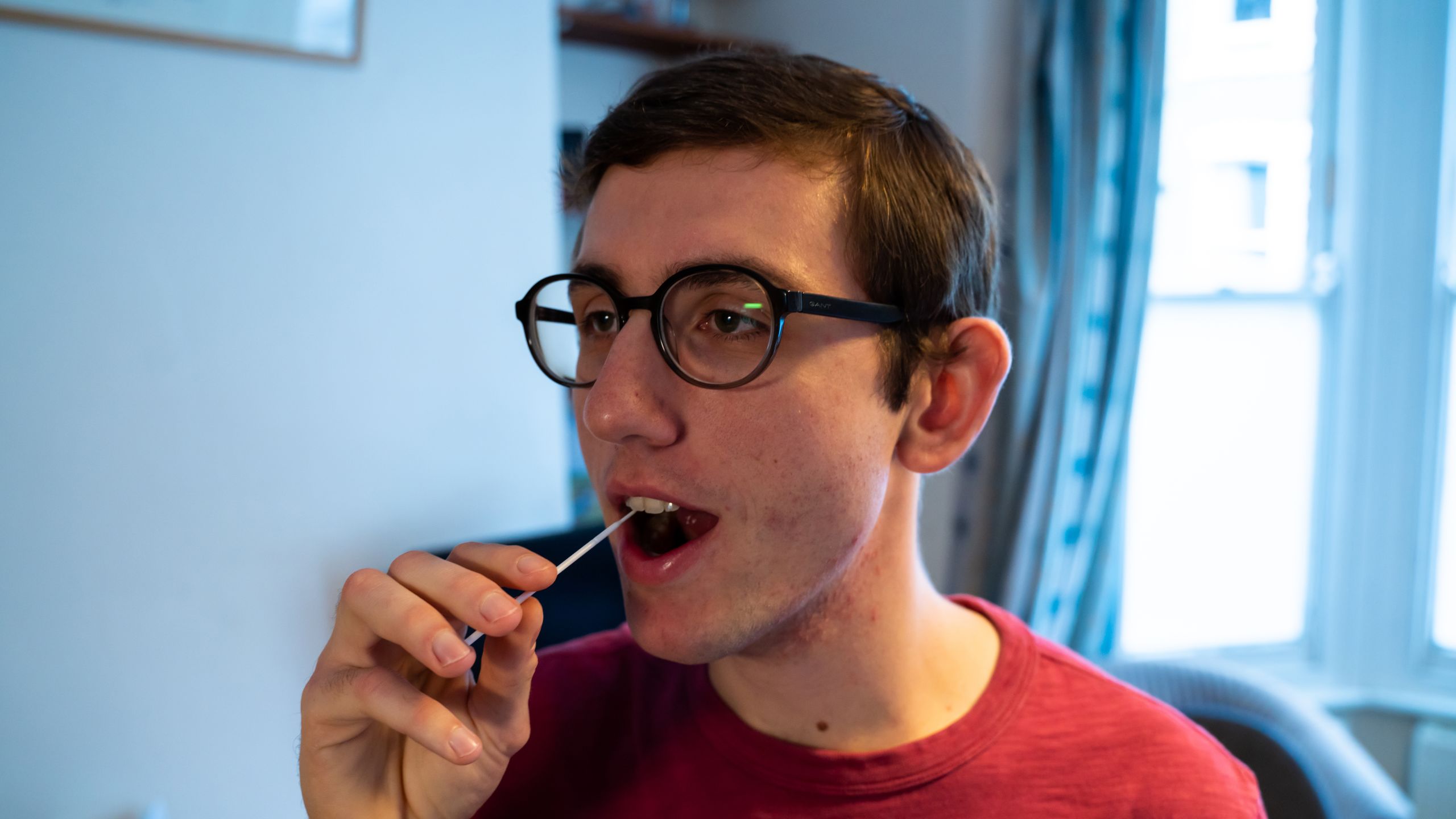
Since the start of October, a dedicated team drawn from across the University and its Colleges has been running an innovative programme to screen its students for COVID-19. Getting it up and running in time may have been a Herculean task, but its success has been remarkable.
It’s Tuesday morning at St John’s College, Cambridge. Nordin Ćatić, a third year PhD student, gets up as usual, ready to head off to the Department of Materials Science and Metallurgy. But today, before he grabs his breakfast, there is one thing he needs to do: swab for SARS-CoV-2 infection.
Ćatić is not showing any symptoms of COVID-19 and is hopeful that the test result will come back negative, but he is taking part in the University of Cambridge’s Asymptomatic Screening Programme, launched at the beginning of the academic year in October. Its ambitious aim was to offer all students living in College accommodation a weekly test for the coronavirus.
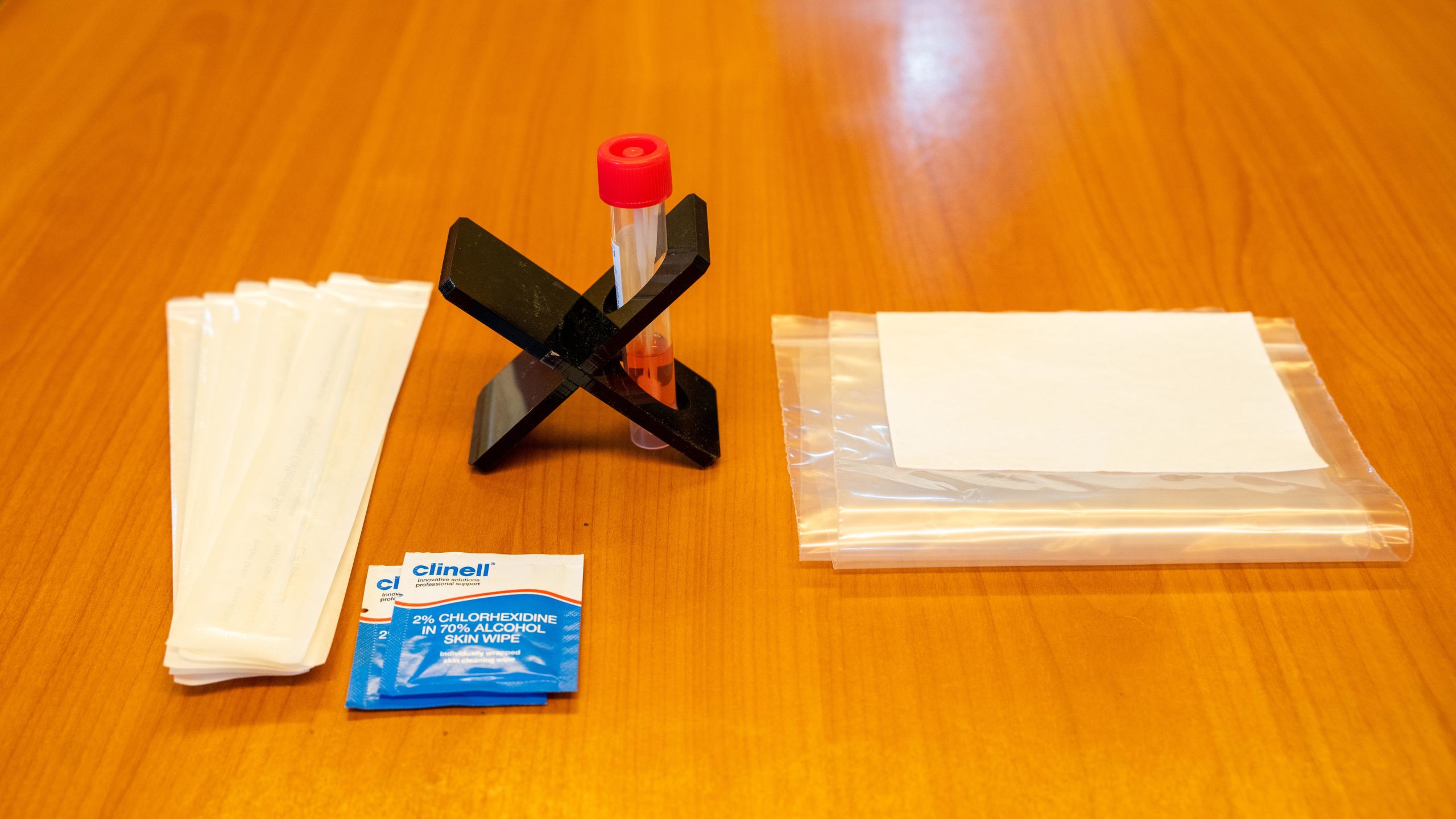
Pooled sample testing kit (Credit: Nordin Ćatić)
Pooled sample testing kit (Credit: Nordin Ćatić)
Ćatić was keen to get involved from the outset. As someone who is actively involved with his College’s MCR (‘middle combination room’ – the body that supports graduate students), he felt it was important to know that when he was mixing with other students, they would be safe. Although he confesses that poking the swab up his nose makes him sneeze for a short while afterwards, he says this a very minor inconvenience. “There's no real downside to taking the test. You only benefit yourself and those that you're going to meet to know that you're actually negative.”
For the majority of Michaelmas term (October-December), around 12,000 students were enrolled in the voluntary screening programme – that’s four out of five eligible students. Dr Nick Matheson, one of the team leading the programme, says this was much higher than they had anticipated.
“It reflects an extremely high degree of engagement in the student body, which has been fantastic. The idea of the programme is to control transmission within the University, and by doing that, protect the wider Cambridge community. And I think the students have really bought into that message.”
Testing times
Prior to the pandemic, Matheson was a principal investigator in the Department of Medicine studying HIV. He is also an honorary consultant at Addenbrooke's Hospital, where his clinical work is focused on infectious diseases. As such, he was involved early on with the response to the pandemic, including as part of a team screening healthcare workers at the hospital for infection.
At the start of summer, the University, led by Matheson’s colleague Dr Mike Weekes, set up two dedicated testing hubs to test staff and students with possible symptoms of COVID-19. But a major factor that led to the global pandemic was arguably the phenomenon of transmission from individuals without symptoms, whether it was before symptoms emerged or because an individual never showed any symptoms. In October, an estimated 18,000 students were due to descend on Cambridge – many for their first time living away from home. The majority of these would be living in accommodation provided by one of Cambridge’s 31 Colleges. It soon became clear that asymptomatic transmission could lead to an explosion in the number of cases at the University.
In response to these concerns, Matheson proposed a mass screening programme for the University using PCR tests – the ‘gold standard’ for testing due to their accuracy. The University, in partnership with GSK and AstraZeneca, had established the Cambridge COVID-19 Testing Centre at the Anne McLaren Building on the Cambridge Biomedical Campus. Part of the contract negotiated with the government was that, subject to national capacity, a limited number of tests per day could be used for the University to screen its students. But even so, it was not going to be possible to screen 18,000 students per week.
“Although we thought this might be a good idea, it didn't seem at the time logistically feasible,” he says.
The breakthrough came when Matheson hit upon the idea of combining students into testing ‘pools’. Each student is assigned to a ‘household’ – usually between six and ten other students who share kitchen and bathroom facilities. Participating students would swab themselves and then pool their samples – this meant that rather than testing, 18,000 individual samples, the team would only need to process 1,000-2,000 pooled samples each week. If a household sample tests positive, then those students who swabbed would take an individual confirmatory test – if they or anyone else in their household tested positive in this follow-up, they would have to isolate for the required time.
The decision was taken early on to test only those students living in Colleges, rather than including those living in private accommodation. This was a pragmatic decision, but based on available evidence, says Dr Ben Warne, a colleague of Matheson’s brought on board to help run the programme.
“We’d seen from reports in the United States and data coming out from the UK that the people at highest risk [of infection] seemed to be university students aged between 18 and 25,” he says. “So we wanted to focus our attention particularly on those students living in College accommodation – people who mixed with other students on a regular basis.”
Even so, this still accounted for 15,000 students. Setting up the programme in time for the return of students would be a Herculean task involving dozens of people across the University.
“Screening programmes normally take years to set up and design and pilot and run,” says Warne. “The major pressure was time – we wanted to put in an effective programme for our students to benefit the community in a very, very tight timeframe. But one of the great things about working for the University of Cambridge is that there are a large number of enthusiastic people with various skill sets that we were able to call upon.”
Overseen by the Head of the School of Clinical Medicine, Professor Patrick Maxwell, this huge team effort has involved colleagues from across the University – from the Faculty of Law to University Information Services, COVID Operations, Communications, Cambridge Student Union and the Colleges to name but a few.

Dr Nick Matheson
Dr Nick Matheson
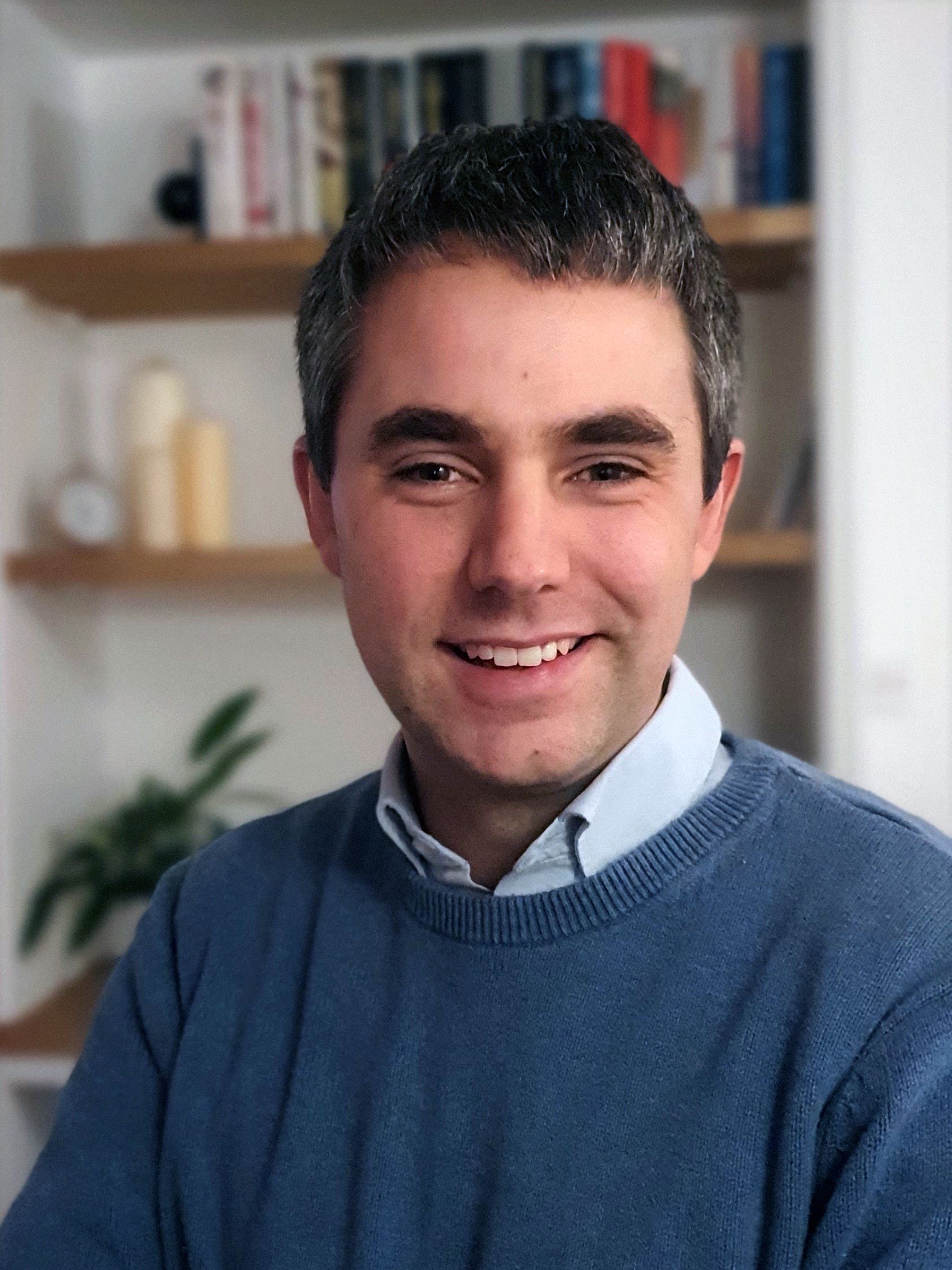
Dr Ben Warne
Dr Ben Warne

Professor Duncan McFarlane
Professor Duncan McFarlane
Engineering a solution
Essential to making this work in practice has been Professor Duncan McFarlane from the Institute for Manufacturing and a Fellow at St John's College. At the start of the pandemic, he and a group of colleagues had begun working with Addenbrooke’s Hospital, looking at how they could apply manufacturing and supply chain logistics solutions to help cope with the surge in patients.
McFarlane was invited to join the team setting up the screening programme to offer advice on logistics. “We realised early on that actually, it wasn't clear how it was going to work operationally, in terms of setting up getting the test kits, putting them together, getting them to Colleges, etc.,” he says.
McFarlane agreed to help run the logistics of the programme, setting up the manufacturing, distribution and collection processes for the test kits. He was helped by his former students. “This is their bread and butter – they’re raw recruits. In their final year they do four industrial projects, where they get dropped in a company and they have three days, two weeks, four weeks, eight weeks to sort out issues inside the company. That's kind of what the testing programme has been to them. And you know, they've been extraordinary.”
They faced some major logistical challenges from the outset, however. “We didn't have any stuff. We didn't have a place to put anything together. We didn't have any people. We didn't have a way to get things to the students, and nor did we know how to get the students to do the test.”
His team set up a pop-up warehouse and mini-production lines on the Cambridge Biomedical Campus to assemble the large numbers of test kits required each week, and enlisted the University Messenger Service to help distribute the kits to the Colleges. They established delivery schedules and a tracking system for all the test kits so that if things went wrong (which they inevitably did at times), they would have a way of finding out where the test kits were. Crucial to this operation were colleagues at University Information Services – Vijay Samtani and Jon Holgate – who took care of the masses of data underpinning the programme, helping make sure the right students received the right tests and the right test results.
McFarlane admits that at first, this may all have seemed like overkill. But the infrastructure they put in place proved invaluable as the programme frequently had to adapt, moving from a pilot to operating at all Colleges, then to setting up end-of-term testing and including students living in private accommodation.
“The over-engineering of the system in the beginning has paid off. We've been able to adapt to every change pretty effectively. It's kind of boring to say, but the pleasing thing is that the logistics didn't cause any bottlenecks.”
And from the Institute for Manufacturing’s point of view, he says, “We've road tested our students. I think we can say we are preparing students the right way for some of the challenges they're going to need in life.”
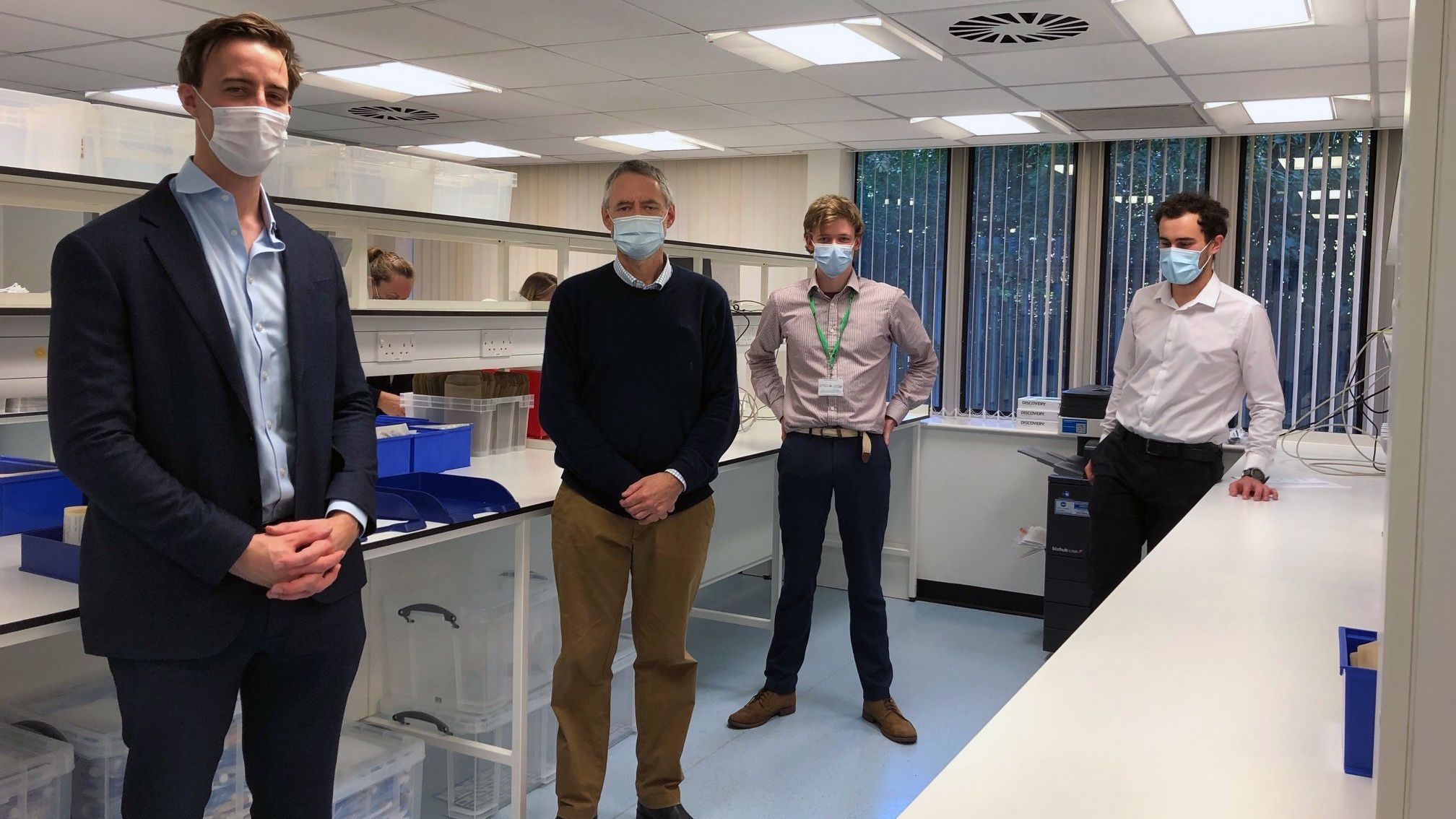
Professor McFarlane (centre) with Rory Dyer and Darius Danaei from the West Forvie test kit assembly operational team and William Warr (left, Prime Minister's Special Adviser on Health)
Professor McFarlane (centre) with Rory Dyer and Darius Danaei from the West Forvie test kit assembly operational team and William Warr (left, Prime Minister's Special Adviser on Health)
Keeping Cambridge safe
For most of Michaelmas term, while the team got the scheme up and running and smoothed out any teething problems, and while they assessed infection rates to ensure they had the capacity for follow-up tests, students were tested every other week. Towards the end of term, the team was able to step up a gear and begin testing all consenting students weekly.
The results from the programme have been very positive, mostly helping keep the number of students testing positive at less than 40 per week (apart from a blip in week six, thought to relate to pre-lockdown celebrations).
The value of the programme became apparent early on – in week three – when the team spotted a cluster of students at Homerton College, suggesting a potential outbreak. As a result, the staff at Homerton, in consultation with the COVID Operations Team, were able to step in, isolate students in the affected areas and prevent the outbreak spreading any further.
“Partly because of the programme, but undoubtedly also because of the whole package of infection prevention control measures implemented across the University, we’ve been able to avoid any very large outbreaks, the sorts of things that have been seen in various places around the UK,” says Matheson.
This term, most courses are being taught online and there are far fewer students in Cambridge than normal, but the Asymptomatic Screening Programme is still in place for those who are here. This time round, every student in College accommodation and the majority of students in private accommodation are eligible for a weekly test.
The programme has attracted the attention of others looking to learn from – or even replicate – its success. Matheson, Warne and colleagues have been involved in discussions with both the UK government and other universities around setting up similar schemes. They are currently writing up several papers for submission to peer-review journals about their experiences.
As well as the direct contribution that the programme has made to keeping Cambridge safe, it is also helping the scientific and public health communities understand the transmission dynamics of coronavirus infection. The team is working closely with researchers at the Cambridge-led COVID-19 Genomics UK Consortium (COG-UK), which is mapping the genomes – the genetic code – of viral samples, to see how the virus spreads within the student population.
“This should provide a great insight into the way that the virus is transmitted around the University,” says Warne. The preliminary findings, which were presented to the government’s Scientific Advisory Group for Emergencies (SAGE) and released earlier this year, appear very positive, suggesting that the programme, together with the University’s public health measures and the responsible behaviour of the majority of its students, has helped limit the spread of the virus.
“It's really interesting as it shows you that once outbreaks happened in Colleges, they stop in Colleges and they don't get transmitted onwards. It's actually transmission events that happen outside the University setting that appear to cause the spread of the disease.”
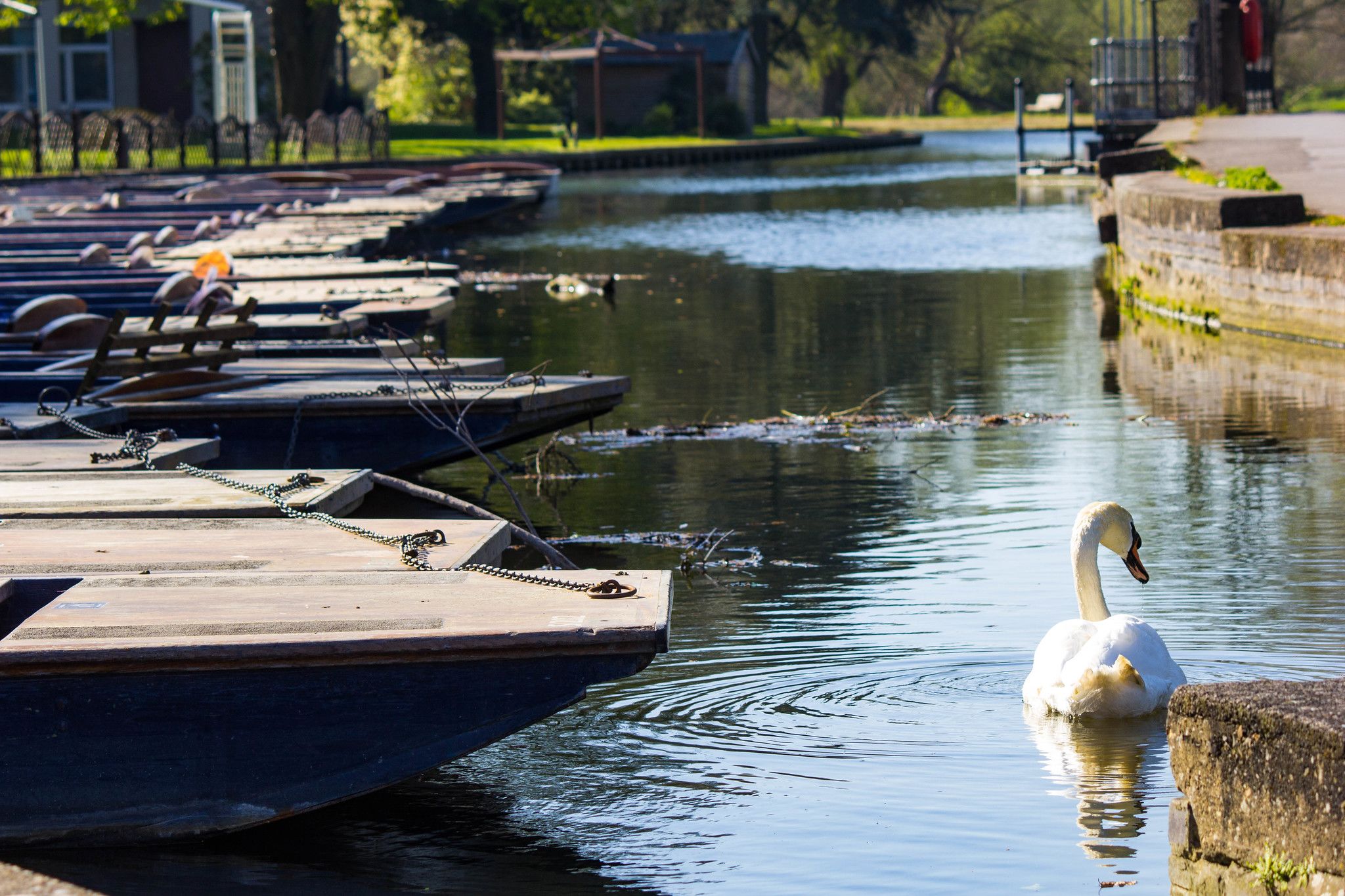
Punts on the River Cam (Credit: Alasdair Massie)
Punts on the River Cam (Credit: Alasdair Massie)
When tomorrow comes
When all this is over, the team look forward to returning to their day jobs. For Warne, this will involve picking up his PhD once again (which is on antimicrobial resistance, a public health emergency that could, ultimately, eclipse COVID-19 in terms of impact). For Matheson, it will enable him to spend more time managing his lab.
“Needless to say we've been extremely busy,” says Matheson. “And from my perspective this is on top of my usual day job, in terms of running my lab and contributing to the clinical services of hospital. And that's true for a great number of people involved in leading and running the programme. So, when it's all over, we will all have more time to give back to our usual day jobs and the teams that we look after.”
When the pandemic hit, Matheson – along with the entire Cambridge Institute of Therapeutic Immunology & Infectious Disease at which he is based – pivoted his research to focus on the coronavirus. The balance has begun to shift back a little now, he says, allowing his team to pick up some of its previous work on HIV.
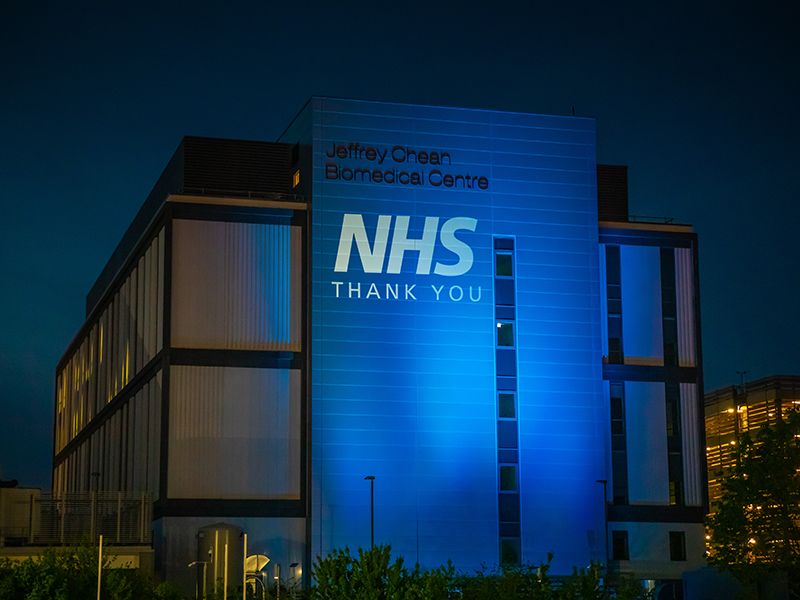
Cambridge Institute of Therapeutic Immunology & Infectious Disease (Image: Lloyd Mann)
Cambridge Institute of Therapeutic Immunology & Infectious Disease (Image: Lloyd Mann)
“[The pandemic has] certainly caused us to reassess the research that we do now, and it will definitely have an impact on the research that we do going forward. It's really focused our minds on identifying what the most important research questions are in terms of their scientific and public health impact.”
For now, though, with the emergence of a new, more transmissible variant spreading throughout the UK, the team is keeping a watchful eye on the results coming out of the programme this term. With a vaccine almost within reach, they are hopeful that their programme can keep the virus in check just long enough to help keep Cambridge safe for the duration.
Article published: 3 February 2021
Main image: Nordin Ćatić (Credit: Dominic Hall)

